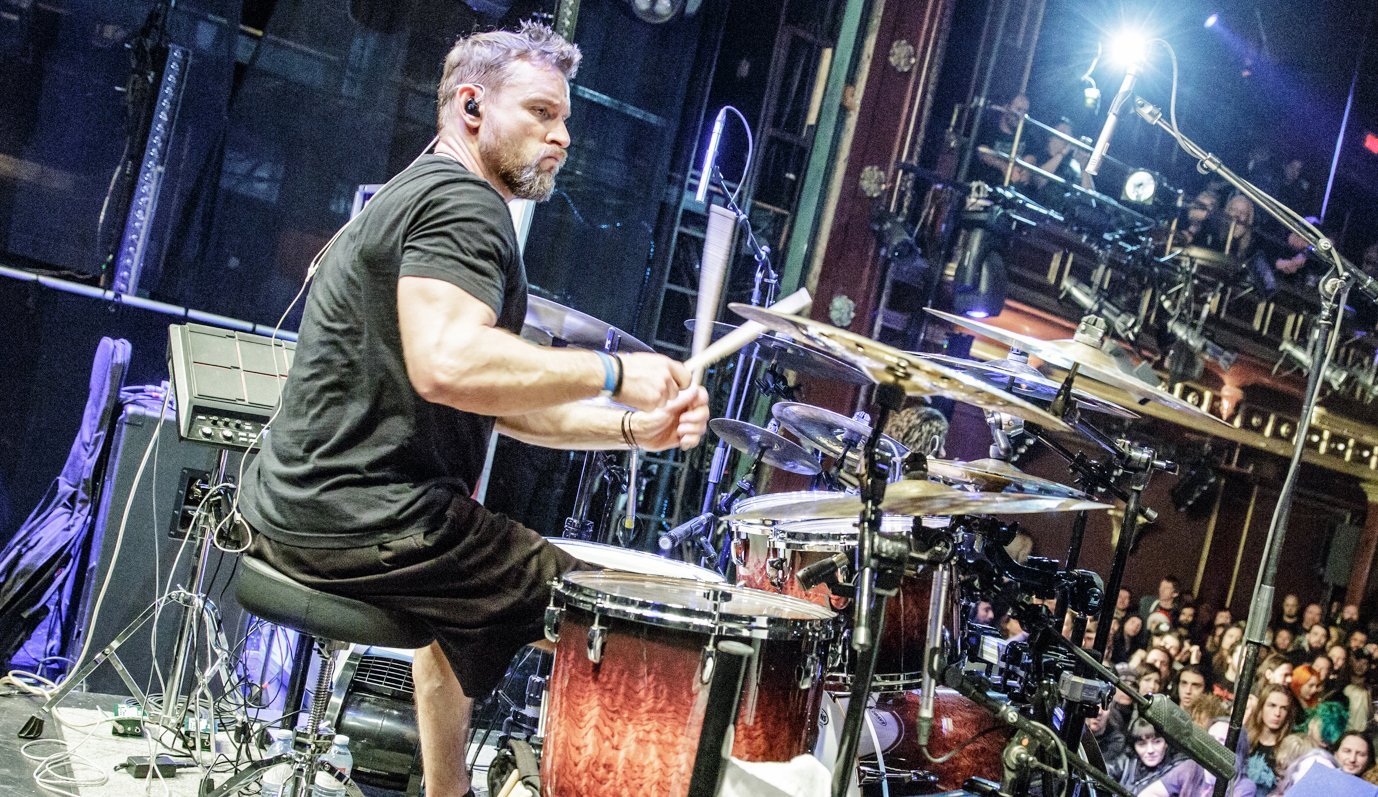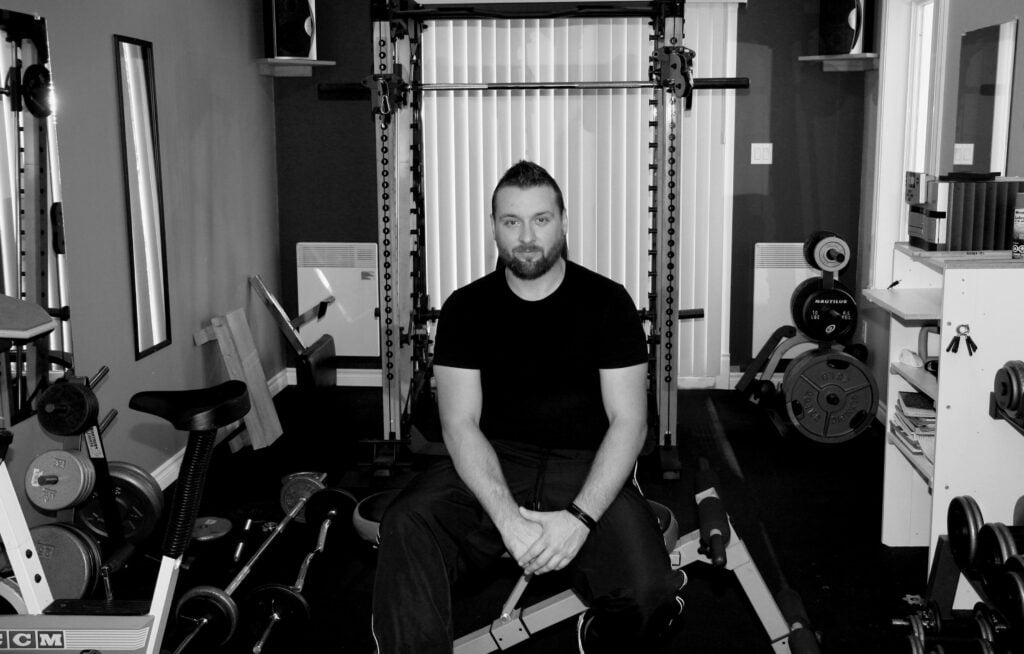
Drummers are athletes – whether you feel like one or not – and to get the best performance on our instrument, we need to take care of our bodies.
Each drummer is built in their own way, so some physiology or muscle composition might give one person an advantage in how easily certain movements come to them, while others need to push extra hard to achieve the same results.
There is one thing we all have in common, though: if we put in the right work, we can achieve our goals.
Flo Mounier, drummer of extreme metal band Cryptopsy, is a personal trainer who works hard to stay at the top of his game. He’s developed drummer-specific workout routines that target the muscles and cardio needed for peak performance and stamina on the kit. He trains 4-5 times a week, and includes a 30-minute drum-specific workout in 2-3 of those sessions. When Cryptopsy is on tour, he still manages to maintain his workout routine.
No matter which exercises you choose, there’s one thing you should always keep in mind. “When doing any sort of workout or playing the drums, mind-muscle concentration is incredibly important,” says Flo. “As long as your mind controls what you’re feeling throughout your body, that’s the key to growth and performance.”
Whether you’re a slow, groovy player or a metal shredder, here are 5 tips to start you on the right path to improving your cardio, mobility, and strength. And you can do most of these things without going to the gym!

Walk at a fairly speedy pace with your strides longer than normal. Lunges are really effective for drumming, so make sure you’re taking wide steps.
When you’re walking, your whole body is moving and reacting, but you should focus on your back leg and push off with the ball of your foot. This rolling ankle motion will give you a kick start with every step. As a drummer, your arms are always in front of you in suspension, so swinging your arms with wrist weights can help at the same time.
Using the same tips for walking, quicken the pace. Take longer strides than normal and be conscious of how your ankle rolls off your foot. You shouldn’t be ‘flat-footing’ it and putting all the pressure on your knees, quads and glutes – your shins and calves do a lot of work as well.
Push off with the ball of your foot and change your pace during your jog: slow, intermediate, and even occasionally sprinting if you can. High intensity interval training (HIIT) is great for the metabolism, so this type of jogging has many benefits. And it’s much more interesting than a monotonous jog at ‘one tempo’.
Whether it’s at home or at a gym, treadmills are fun because you can usually add an incline. Walking uphill is great for your calves and shin muscles, and you can achieve in 3-5 minutes what it would take 15 minutes to do when walking on a non-inclined surface.
Most drummers care about ankle mobility and making it easier to push down that pedal. If you have a treadmill at home, you can add a drummer hack: stick a practice pad in front of you and do your rudiments while you walk! Time is precious, so why not kill two birds with one stone?
Biking is one of the best exercises you can do as a drummer. You’re sitting and pushing the pedals, and while the range of motion is greater than on a kit, you’re emulating the same type of movements. Set your seat back as much as possible so you’re pedaling a bit in front of you (you shouldn’t have your feet directly under your knees).
The momentum for strong bass drum hits starts in the glutes, moves to the quads, and then into the feet. Because biking is a full leg exercise, it’s perfect for drummers. Try 2-minute intervals. For the first two minutes, use your full legs. For the next two, focus on just using your ankles, calves, and shins. You’ll be pedaling and pushing with the same kind of resistance, but this can help you develop power and flexibility in your ankles.
That mind-muscle connection – to switch between muscle groups – is super advantageous for drumming.
If the bike seat is uncomfortable, why not swap it out for a drum throne top? And if you have a stationary bike and can safely mount a practice pad in front of you, why not do that too?
Jumping rope is arguably one of the hardest cardio exercises, but it’s effective for drummers because not only does it work on legs and ankles and a pop-up motion, but it also works your wrists and forearms because you’re flipping the rope.
Take it easy at first because you’ll get tired quickly. Start with three repetitions. Go as long as you can, then take a minute break before starting again.
You can find jump ropes with weighted handles for $10-20 if you want more resistance for stronger forearms.
There is no ‘silver bullet’ exercise that will make you a better drummer. But a healthy lifestyle and regular exercise will get you in better physical shape to rock out on a physically demanding instrument.
Some people will find that working on certain muscle groups gives them more power or control on the drums, while others may not. Everyone’s body is different. These cardio tips are meant to give any drummer an advantage on the kit.
If you’re lacking in force and control in a certain muscle, the only way to get it to grow is by training it – usually with resistance training, rather than endurance training. Even if you aren’t able to do what some other drummers seem to do without effort, there’s still hope – you just may have to work harder for it.
Flo has been a personal trainer for over a decade and offers remote sessions. Email floskypelessons@hotmail.com to learn more about drummer-specific workouts!
*Disclaimer: Personal trainers are not medical professionals. If anything hurts or feels bad when trying these exercises, stop.
Feature image: Mihaela Petrescu
Samantha Landa currently drums with Conquer Divide and has been featured by outlets such as Sick Drummer Magazine and DRUM! Magazine. Sam proudly endorses Mapex Drums, Sabian Cymbals, Evans Drumheads and Los Cabos Drumsticks.


By signing up you’ll also receive our ongoing free lessons and special offers. Don’t worry, we value your privacy and you can unsubscribe at any time.
We use cookies for traffic data and advertising. Cookie Policy »